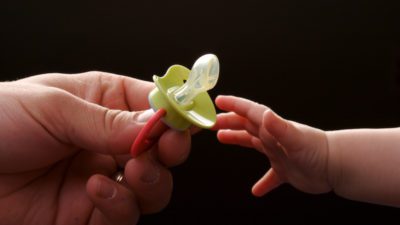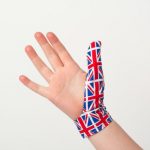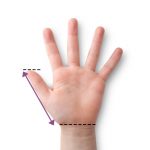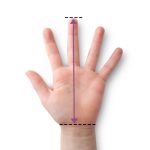Delve into the differences and links between object attachment and thumb sucking. Gain insights into their roles in psychological development and behaviour patterns.
Object attachment and thumb sucking are both common behaviours in childhood, but they serve different purposes. Object attachment relates to emotional comfort, while thumb sucking is a self-soothing mechanism.
Introduction
Object attachment and thumb sucking are often categorised together. But should they be? Are they that similar? And why do children develop these behaviours? This blog will seek to answer those questions.
All parents know that children can easily get attached to objects, people and places. Indeed, there are countless books and websites dedicated to attachment theory.
Attachment behaviour in itself is no bad thing. Sources show that: “Infants who experience a secure attachment relationship develop a reasonably firm expectation of feeling protected and safe, which in turn allows them to explore their world more confidently.”
Two of the more commonly seen behaviours that may fall into this category are object attachment and thumb sucking. While these two behaviours are often placed together, there are strong differences between them. Read on to find out more.
What is object attachment?
Object attachment is a condition where an individual places a disproportionate amount of attention on an object, typically using it as a source of comfort. Perhaps the best-known example of this among children is a “comfort blanket.” Other examples include favourite toys, a dummy or a doll.
Comfort objects are most often associated with bedtime – children sleeping with a teddy bear for example – but they are often used at other times of day as well.
So, why do children often gravitate to these objects? The clue is in the word itself: comfort! Some psychologists argue that object attachment is an entirely healthy condition where a child starts to move away from the mother-child bond and develop attachments to other, external sources. While still seeking comfort, they become aware that a mother is not the only source of support.
Evidence suggests that the use of comfort objects can even help children gain independence and reduce anxiety levels.
As parents know, when a child is born, it is entirely dependent on its caregivers for food, attention, and survival. But as the child develops, it starts to look further afield and gain a sense of independence. It starts to realise that its mother is not the only entity in the world and that a parent cannot provide everything at all times. This can, understandably, cause frustration and anxiety.
It is typically at this stage that a child becomes attached to an object, which provides a sense of comfort during an anxious time of transition. This period of development will typically pass, and just like thumb sucking, it only becomes a cause for concern if it continues over the long-term.

What about thumb sucking?
In most cases, thumb sucking starts much earlier than object attachment – typically in the womb. Whereas the key emotion for object attachment is “comfort”, for thumb sucking the main trigger is the need to “self-soothe.”
Thumb sucking is a totally normal reflex, with many children naturally growing out of the practice as a toddler. However, for a minority, it continues as they head towards their pre-teen years. Many experts state that thumb sucking consciously mimics the process of breast feeding as a means of a child soothing themselves. A child often sucks their thumb at times of boredom or hunger.
The other main triggers are anxiety and stress. Thumb sucking has been proven to act as a source of emotional regulation. This is especially acute at times of great change for a child, for example the arrival of a new sibling, a new house move or a new school. By sucking their thumb, a child calms themselves down and feels soothed and at peace.
Whereas the impacts of long-term object attachment are psychological, there can sadly be both physical and psychological consequences of continuous thumb sucking. The most obvious negative side-effects are those relating to oral health. Children who thumb suck over a long period of time can find that their teeth do not grow properly. They may develop overbites or overjets and can have issues with jaw alignment. Children can also be prone to constant infections on their thumbs or around their mouths. And children who suck their thumbs into their primary school years can find themselves at risk of bullying and self-esteem issues.
Thumb and finger sucking habit?
Help your child prevent the problems that prolonged and aggressive thumb and finger sucking can cause Buy NowWhat are the similarities?
Clearly, there are a number of similarities between object attachment and thumb sucking. Both behaviours are often associated with toddlers and are well-known across the parenting world. In some cases, a child’s comfort object will be a dummy (pacifier) which can of course be connected to the urge to thumb suck.
In both object attachment and thumb sucking a child is seeking to regulate their emotions at a stage in life where they have not yet developed other coping mechanisms. Young children are experiencing so many different feelings for the first time, it’s no wonder they feel a bit lost and unsure!
When a child enters a period of change, security is vital, hence the term “security blanket.” Both object attachment and thumb sucking can help a child develop a sense of being secure.
In some cases, children will develop both behaviours. They will suck their thumb and have a favourite comfort object. This can be both positive and negative. Isabel, who associated her muslin with the need to thumb suck, found that the best way to break the thumb sucking habit was to stop using her “comfort” muslin too.
But in some situations, parents find that by giving a child a comfort object they are less likely to thumb suck, or it may help them to stop.
As noted, parents don’t need to be too worried about a child having a comfort object or sucking their thumb, as long as it is not constant and does not continue beyond the age of 4 or 5. About 12.5 per cent of 7–11-year-olds suck their thumb, and that is cause for concern.
A child who has object attachment and/or sucks their thumb is essentially saying “I want security.” This can be a very good thing in the development process and allows a parent to intervene, as and when appropriate, and help their child develop healthy coping mechanisms.
And what about the differences?
The most obvious difference lies in the main driver of each behaviour. Object attachment is about comfort, while thumb sucking is self-soothing.
Object attachment is also an external act which is driven more by a psychological need. Thumb sucking on the other hand has both psychological and physical causes: the mimicking of suckling, for example. Crucially, thumb sucking can also have both psychological and physical side-effects.
Generally speaking, object attachment is more widely seen as a positive step in a child’s development as they learn to be independent and to seek sources of comfort away from the mother-child bond. Thumb sucking is typically seen as more concerning, especially if it continues long-term, as a sign of someone who has not yet developed other types of coping mechanism.
Recommended by Dentists worldwide
“I love the Thumbsie® – it works every time I recommend it! The Thumbsie® provides a fun way for a dentist or parent to help the child stop sucking because after all, it’s a hard habit to kick." Dr. Kotecha of Glen Dental Buy NowConclusion
Children all across the world often have comfort objects, and they often suck their thumbs too. Both behaviours are a normal part of development and can often be interconnected.
If your child appears to be overly reliant on their comfort object, or they suck their thumb for prolonged periods, it can be really important to help them develop healthy attachments to others – whether it be family members or schoolfriends.
Prolonged thumb sucking can cause oral health problems which can be tricky to fix. The sooner it is nipped in the bud, the better.
Of course, children are complex mixtures of thoughts, feelings and emotions. That’s why we love them! Ultimately both thumb sucking and object attachment are about a need for security, and they offer opportunities for discussion between a parent and a child. Key questions to ask include: are you worried? what is making you scared? how can I help?
We all know that children’s emotional wellbeing is so important, and we definitely encourage you to read more about attachment theory.
If you have particular concerns about either object attachment or thumb sucking, please do seek out advice. There are many fantastic child development experts, counsellors and psychologists who will be able to give you personalised support. The help is out there!
Fabric Thumb Guards
Worn day and night a Thumbsie® thumb guard can help your child to stop thumb sucking Buy NowAny other thumb sucking tips?
Many parents contact us when they are at their wit’s end. They feel they have tried everything. Our Thumbsie thumb gloves are designed especially for children with long-term thumb sucking habits. And time and time again they have proven to be successful.
A Thumbsie fits on a thumb, or fingers, like a glove. They come in five different sizes, complete with a measuring guide, and numerous designs and styles, from sport to flowers and superheroes. We also offer accessories such as our rewards chart – an important part of encouraging a child to stop thumb sucking – as well as our brilliant book. And we’ve recently launched a skin balm for sore thumbs, made from natural products.
Thumbsie have won countless awards over the years, we are officially accredited by the Oral Health Foundation, and best of all, we have hundreds of reviews from happy parents on sites such as Google Review.
Please note all comments will need to be approved before appearing on this page. Please respect others when posting.

































Comments